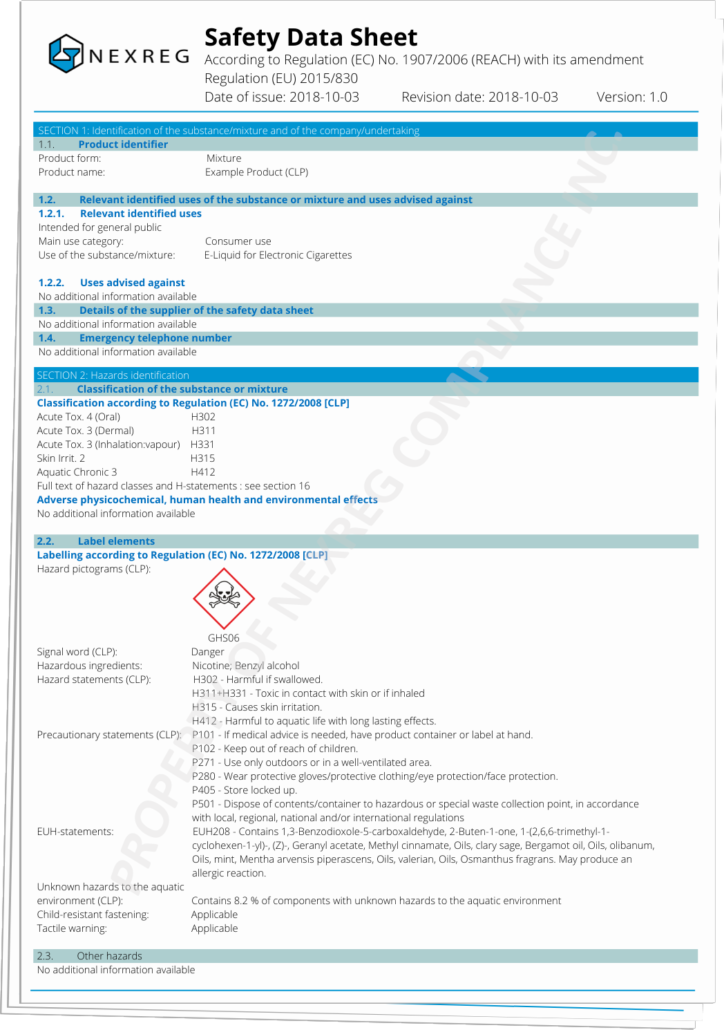SDS Review Services
What Regulations Govern an SDS?
The Globally Harmonized System (GHS) is the United Nation’s (UN) system of standardizing and harmonizing the classification and labelling of hazardous chemicals.
Safety Data Sheets (SDSs) are documents that provide information about the hazards of a product as well as supplementary information that goes beyond what is listed on the product label (first aid, protective equipment, and safe handling).
Many countries have established regulations that align with different revisions of GHS that instruct how to classify and label hazardous substances and mixtures. It is important that each product’s SDS be reviewed to ensure it follows the appropriate jurisdiction for sale. This review can include both the regulation and language for the corresponding region.
Each country has their own set of chemical regulations which sometimes results in conflicting information. GHS was developed by the United Nations to bring a global standardized approach to chemical safety. The aim is that every country will incorporate elements of GHS into their chemical regulations. This in turn will create a consistent worldwide framework and make international sales and transporting hazardous chemicals easier.
Which type of products would this regulation apply to?
GHS is for hazardous chemicals in the workplace. Pharmaceuticals, food additives, cosmetics and pesticides are not covered by the UN GHS in the finished form but will be covered where workers may be exposed to hazardous chemicals during the production phase and in transport. Articles and food are also not covered by GHS. Many countries have other legislations that regulate the above products.
Is it mandatory for an SDS to be up to date?
No country is required to adopt all or part of the GHS. However, it is important to comply with the country specific regulations to ensure that the products have an SDS with the necessary regulatory elements. The focus is to ensure that an SDS is available for every hazardous product, with the information required to help protect human health and the environment.
What are the risks if a company chooses not to comply or an SDS is outdated?
The risks if a company chooses not to comply could include worker accidents or serious injury, and unintended exposure to hazardous chemicals. Noncompliance for an SDS could also result in significant fines and penalties for the employer, supplier, or manufacturer.
Manufacturers are typically responsible for creating the product’s SDS, and the suppliers will then distribute them to the customers. Employers are responsible to make sure that all hazardous products have a compliant and up to date SDS that can be readily accessed by the employee at any time, especially for those who could be directly exposed to the product.
How Can Nexreg Ensure Your Compliance?
If you have an existing SDS for your intended country or an SDS that you doubt compliance for, Nexreg can review the SDS and determine if all the necessary information is present.
Nexreg can review your SDS against chemical regulations for over 23 countries. We have devised a “SDS checklist” that we will provide to you verifying if your current SDS lists the important/required information pertaining to the country’s regulations.
Nexreg can also provide a product GHS classification review. With your products full formula, we can determine the classification of your product with the most up-to-date hazard and database information and determine if our classification matches with your current SDS.
Naturally, to guarantee a compliant SDS for your product, it is recommended that Nexreg classify and author your SDSs. Our Regulatory Consultants are well-versed in a variety of regulations and will ensure that you receive an SDS that meets the GHS requirements for your required country.

